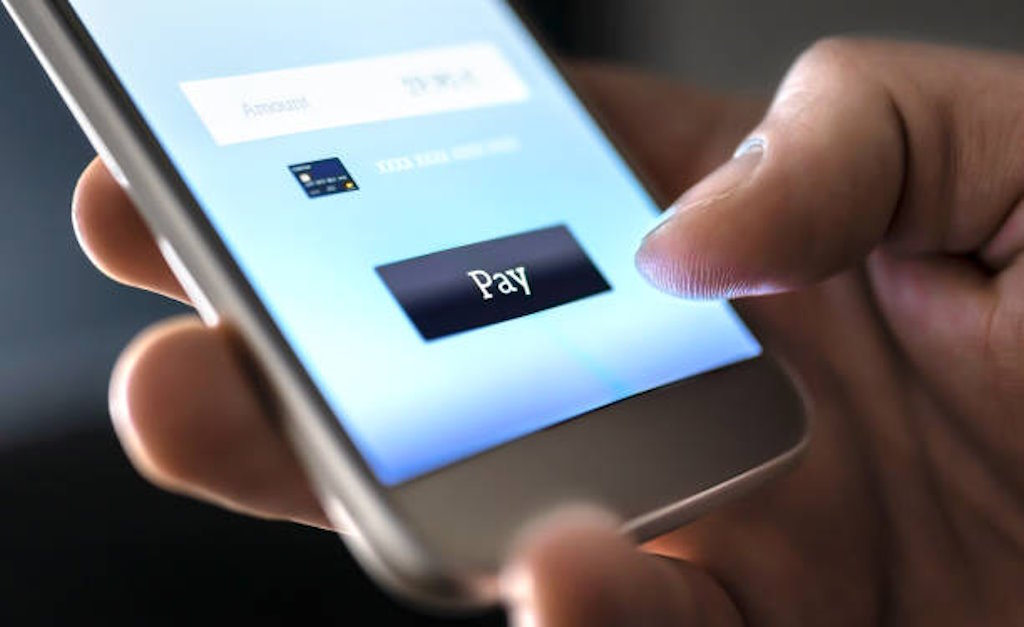As the world becomes more interconnected and digitized, online payment methods are becoming increasingly important. Online payments allow consumers and businesses to exchange money electronically, making transactions more convenient, faster and often more secure than traditional payment methods. The development of online payment methods has fueled the growth of e-commerce, online services and online marketplaces.
Online Payment Services
In today’s world, numerous online payment services offer unique opportunities, advantages and potential disadvantages. These services facilitate the development of e-commerce and have become an integral part of the digital economy.
PayPal
PayPal is one of the most popular ways to pay online. Since its start in 1998, it has become the world’s most popular way to pay online. Users can use PayPal to give and receive money, pay for goods and services, and even set up automatic payments for subscriptions.
One reason why PayPal is so popular is that it can be used in many different ways. It can be used on a number of Internet sites, even ones that aren’t usually used for these kinds of services. A prime example is non Gamstop casinos with PayPal deposits.
Features:
- Enables sending/receiving money and paying for goods/services.
- User-friendly interface with high-grade security.
- Versatile use.
Skrill
Skrill, formerly known as Moneybookers, is a provider of digital wallets and online payment services that have been part of the digital transaction landscape since 2001. Skrill provides services for sending and receiving money, storing cards, linking bank accounts and making fast international transfers.
One of the distinguishing features of Skrill is its popularity in the online gambling and betting community due to its easy integration with numerous gambling platforms. Skrill also stands out with its Skrill Prepaid Mastercard, which allows users to instantly access their balance, providing an additional level of flexibility. Skrill supports 40+ currencies and operates in over 120 countries.
Features:
- Allows sending, receiving, and storing money.
- Supports 40+ currencies and operates globally.
- Popular in the online gaming and betting community.
Neteller
Neteller, like Skrill, is a well-established online payment service that allows money transfers and is widely recognized in the online gaming world. Owned by the Paysafe Group, it has been providing online transactions since 1999. Neteller is known for offering services like money transfers to and from merchants, such as forex trading firms, social networks, and online casinos.
It also allows customers to withdraw funds directly using the Net+ card or transfer the balance to their bank accounts. The service supports transactions in multiple currencies. Despite its strong ties with the gaming community, Neteller has expanded its utility to cater to a wider range of industries and uses.
Features:
- Provides online money transfers.
- Offers services to/from merchants.
- Supports transactions in multiple currencies.
Klarna
Klarna is an innovative Swedish fintech company that offers online buy-now-pay-later services. This service breaks down the total cost of an item into manageable instalments, allowing consumers to spread out their payments over time, interest-free. As a financial intermediary, Klarna takes on the role of managing payments and payment schedules between the buyer and the seller.
It’s known for the transparency of its terms and conditions, and its partnership with a large number of online retailers. Klarna’s payment service is currently available in several countries, including the United States, UK, and Australia, among others.
Features:
- Buy-now-pay-later service with no interest.
- Easy-to-use, straightforward interface.
- Partnerships with numerous online retailers.
SEPA
SEPA, short for Single Euro Payments Area, is a payment-integration initiative of the European Union. It standardizes electronic euro payments, making it possible to make cashless euro payments to any account located anywhere in the area using a single bank account and a single set of payment instruments.
SEPA services include credit transfers, direct debit payments and card payments. By making cross-border payments as easy as domestic payments, SEPA has greatly simplified banking operations and made a significant contribution to EU financial integration.
Features:
- Standardizes electronic euro payments.
- Services include transfers, direct debits, and card payments.
- Makes cross-border payments easy.
Giropay
Giropay is a popular online payment system in Germany that allows users to make secure transfers from their bank account to the merchant’s account. It is built on top of the internet banking systems of German banks, allowing for fast direct online purchases with immediate payment confirmation.
The system directly links customers to their bank’s online banking portal during checkout, enabling instant transfers from the customer’s bank account to the merchant’s account. Thanks to its integration with numerous German banks and ease of use, Giropay has become one of the leading online payment methods in Germany.
Features:
- Secure online transfers between bank accounts.
- Built on German banks’ online systems.
- Immediate payment confirmations.
Amazon Pay
Amazon Pay is a seamless online payment service from e-commerce giant Amazon. It allows users to make purchases using payment information already stored in their Amazon accounts.
This approach minimizes the risk of data theft and increases the convenience of checkout by reducing the time required to enter payment details. A significant advantage of Amazon Pay is its integration with Amazon’s ecosystem that is growing.
Features:
- Simplifies e-commerce transactions.
- Minimizes risk of data theft.
- Integrated within the Amazon ecosystem.
Google Pay
Google’s Google Pay (formerly known as Android Pay) is a digital wallet platform and online payment system. This service allows users to make payments using smartphones, tablets or watches, eliminating the need to use physical cards or cash.
Google Pay has also expanded to peer-to-peer transactions, allowing users to send and receive money quickly. Its deep integration with Android devices and the entire Google ecosystem makes it a particularly convenient tool for Android users.
Features:
- Allows payments using Android devices.
- Enables peer-to-peer transactions.
- Deep integration with Google ecosystem.
Apple Pay
Apple Pay, a product of Apple Inc., provides iPhone, iPad, Apple Watches and Mac users with a simple, secure and private way to pay. Apple Pay users can make contactless and secure purchases in stores, apps and online, providing a universal payment solution.
One of the key strengths of Apple Pay lies in its seamless integration with Apple devices. This symbiotic relationship with the broader Apple ecosystem, along with a strong emphasis on user privacy and security, plays a crucial role in Apple Pay’s popularity.
Features:
- Offers contactless purchases in stores/apps/web.
- Seamless integration with Apple devices.
- Strong emphasis on user privacy and security.
Stripe
Stripe is an online payment processing platform designed for businesses. It allows organizations to send and receive payments over the Internet, providing commercial solutions for thousands of companies of all sizes.
The flexible set of APIs offered by Stripe makes it a popular choice for tech-savvy businesses. The platform’s flexibility and high degree of customizability, combined with a powerful backend, make it attractive to companies in need of customized payment solutions.
Features:
- Online payment processing platform for businesses.
- Offers a flexible suite of APIs.
- High degree of customization and powerful backend.
Online Payment Options in Different Regions
Different regions have their own preferences and rules that influence the popularity of online payment methods.
Europe
In Europe, online payments have seen a substantial uptick due to increased e-commerce activity and digital transactions.
- Bank Cards: Bank cards, both debit and credit, remain a widely used method for online transactions in Europe. Their convenience, coupled with enhanced security measures like two-factor authentication, make them a popular choice for many Europeans.
- Cryptocurrencies: Although adoption isn’t universal, Europe has shown a relatively open approach to cryptocurrencies. Some online retailers and service providers accept cryptocurrencies, and crypto-based payment gateways have found their place in the European market.
- E-Wallets: E-wallets, such as PayPal, Apple Pay, and Google Pay, have been warmly welcomed in Europe. These services offer quick, seamless transactions and are often associated with better security measures, increasing their popularity for online shopping and services.
Asia
Asia, with its diverse range of economies and tech-savvy populations, presents a vibrant landscape for online payment methods.
- Bank Cards: Bank cards are widely used in Asia, although the adoption rate varies by country. Advanced economies like Japan, South Korea, and Singapore have high credit and debit card penetration, while in developing economies, the usage is growing steadily.
- Cryptocurrencies: Cryptocurrencies have had a mixed reception in Asia. While some countries have embraced cryptocurrencies, others have imposed regulations or restrictions. Nevertheless, cryptocurrencies continue to be part of the digital payments landscape in Asia.
- E-Wallets: Asia has seen a significant surge in e-wallet usage. Digital wallets like Alipay and WeChat Pay in China, Paytm in India, and GrabPay in Southeast Asia have become prominent players. These e-wallets have expanded their services beyond payments to encompass a wider range of financial services.
America
In America, online payment methods have evolved rapidly, driven by technological advancement and changing consumer behaviour.
- Bank Cards: Bank cards are the traditional choice for online payments in America. They are widely accepted, secure, and convenient, making them a popular choice for both consumers and businesses.
- Cryptocurrencies: Despite a somewhat volatile relationship, cryptocurrencies have carved out a niche in the American market. Certain retailers and service providers accept crypto payments, and dedicated cryptocurrency payment processors are growing.
- E-Wallets: E-wallets, including PayPal, Apple Pay, and Google Pay, have gained significant traction in America. These services have become popular for their convenience, speed, and enhanced security measures.
Conclusion
The world of online payment methods is vast and diverse, shaped by technological advances, regional preferences, and changing consumer behaviour. Whether it is online payment services such as PayPal or Google Pay, bank cards, or new forms such as cryptocurrencies, these payment methods continue to transform the way transactions are made. Technology continues to evolve.







